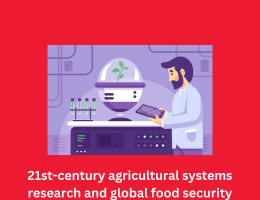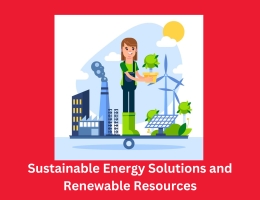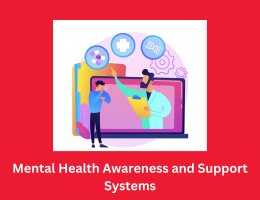
Sustainable Energy Solutions and Renewable Resources
- By admin --
- Friday, 08 Mar, 2024
In an attempt to create a extra sustainable and ecologically friendly destiny, the look for long-term strength assets and the usage of renewable substances have received attention due to developing environmental problems and the need for fast motion to prevent worldwide warming. The transition to renewable power sources offers a way to reduce the effect at the surroundings, accelerate economic boom, and sell electricity independence as concerns approximately greenhouse gasoline emissions, energy protection, and dependency on fossil fuels boom. Global civilizations can concurrently mitigate the negative outcomes of climate alternate and uncover new potentialities for sustainable prosperity by using adopting modern generation and harnessing the electricity of renewable assets.
In addition to fossil fuels, renewable energy resources such as solar, wind, hydropower, biomass, and geothermal strength provide a variety of sustainable energy alternatives. In contrast to limited resources such as coal, oil, and natural gas, renewable energy comes from naturally replenished resources such as sunlight, wind, water, natural gas, and heat from the Earth's core. If we rely more on X and less on Y, then C will be reduced; D is associated with the generation of conventional electricity.
Solar energy is one of the most abundant and accessible renewable energy sources, capable of meeting a significant portion of the global electrical demand. If you need electricity at home, in church or any other place, then choose Photovoltaic (PV) solar panels to turn sunlight into power; alternatively use solar thermal systems that produce heat by absorbing solar radiation. These days solar power looks increasingly similar to other sources of traditional energy due to progress in science and technology. As a result, solar energy is being widely adopted and deployed worldwide.
Similar to this, wind energy has become a popular renewable energy source as wind turbines can produce electricity by using the kinetic energy of the wind. Thanks to falling prices, favourable legislative incentives, and technology breakthroughs, both onshore and offshore wind farms have multiplied in recent years. With its zero emissions, small land impact, and low carbon footprint, wind energy has a lot to offer the environment and is thus essential to the shift to sustainable energy.
Hydropower, derived from the gravitational force of flowing water, remains the largest source of renewable electricity globally, providing reliable and cost-effective energy generation in many regions. From large-scale hydroelectric dams to small-scale run-of-river installations, hydropower offers a flexible and scalable solution for meeting electricity demand while reducing greenhouse gas emissions and supporting water management and flood control efforts.
In addition to renewable energy sources like solar, wind, and hydropower, biomass energy—produced from organic materials like wood, agricultural waste, and leftover crops—has enormous potential to spur rural development and reduce carbon emissions. Bioenergy technologies provide flexible ways to produce fuels, electricity, and energy for transportation while reducing their environmental effect and improving energy security. Biogas, biofuels, and biomass-fired power plants are a few examples of these technologies.
Geothermal energy, harnessing the heat from the Earth's interior, represents another renewable resource with vast untapped potential for clean and sustainable energy production. Geothermal power plants utilize underground reservoirs of hot water or steam to generate electricity, providing a reliable and continuous source of baseload power while emitting minimal greenhouse gases and air pollutants.
“Furthermore, the intermittent nature of renewable energy sources needs to be handled through bettering grid integration, improvements in energy storage systems as well as the installation of smart grids to guarantee a reliable and robust power supply. Efficient capture and utilization of renewable power are made possible by battery storage, pumped hydro storage and other creative storage solutions hence making it possible for grid stability, demand management and energy optimization to be done effectively.”
However, despite the rapid growth of renewable energy deployment in recent years, significant barriers remain to realizing the full potential of sustainable energy solutions. Policy and regulatory frameworks, market incentives, investment mechanisms, and public awareness are critical drivers for accelerating the transition to renewable energy and overcoming challenges such as intermittency, grid integration, and infrastructure limitations.
In order to make sure that every one societies, specifically the marginalised developing nations, gain from renewable strength, it is also essential to fight strength deprivation, increase the supply of low-cost, sustainable power assets, and sell equitable electricity distribution. Sustainable energy solutions must prioritize social equity, environmental justice, and inclusive development to build resilient and sustainable societies for future generations.
In conclusion, harnessing renewable resources and creating sustainable energy solutions are the only ways to solve the urgent problems of climate change, environmental degradation, and energy insecurity. If we take the initiative to be creative, work with one another and set rules, we will speed the move towards an economy that releases less carbon into the atmosphere, promote growth in the economy and improve the prospects of future lives for all. Besides, if everyone were to invest in green sources of power, then our environment would definitely change within no time.The benefits of putting money into renewable power are also clear.





